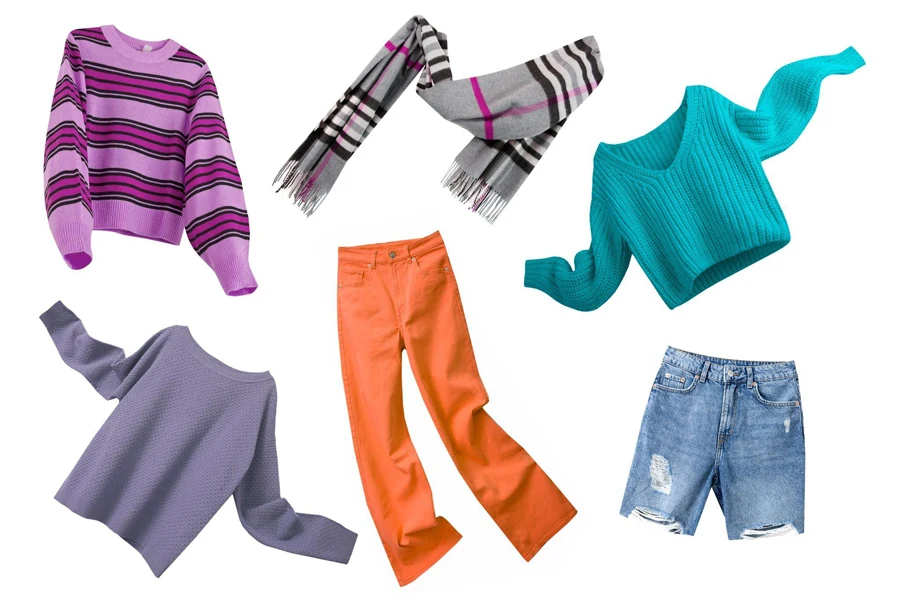The North American consumer goods market, which encompasses everything from food and beverages to electronics, clothing, and household goods, is a vast and dynamic sector catering to the daily needs and desires of consumers.
In 2020, the consumer packaged goods (CPG) industry in the region, which includes sales of various consumer products through both traditional retail channels and e-commerce, was estimated to be worth over US $2 trillion in sales, highlighting its oversized importance and the opportunities it provides to goods manufacturers.
The market is highly competitive, driven by innovation, branding, and consumer preferences, and e-commerce reliance has surged, with companies playing a significant and transformative role in the North American consumer goods industry.
Amazon in particular, as one of the world’s largest e-commerce platforms, serves as a crucial distribution channel for consumer goods of all types, providing a platform for thousands of sellers to promote, sell, and send items to buyers at the click of a button.
It’s important to note that sustainability and ethical considerations are becoming increasingly important to North American buyers, influencing product choices, while regulatory bodies, such as the FDA, play a pivotal role in ensuring product safety and quality. Overall, the North American consumer goods market remains robust and adaptive to changing consumer trends.
With this in mind, let’s take a brief look at North American markets divided by country, as summarized in Amazon’s own marketplace overview.
Table of Contents
Overview of the top North American markets
Overview of the top industries in North America
Conclusion
Overview of the top North American markets
United States
The United States is an economic powerhouse, boasting a US $6.04 trillion retail economy in 2018 with 5% year-on-year growth. Its e-commerce sector reached over US $586 billion in 2019, growing at an impressive 14% annually and constituting 9.46% of total retail sales. This places US e-commerce second only to China among major economies.
With its vast landmass, 328 million population, highest birth rate among developed nations, and a rich, diverse culture, the US is a dynamic marketplace. Amazon dominates the online landscape, drawing 1.78 billion monthly visitors and 54.1% of web traffic share. It’s a prime destination for popular product sales, given its high-income population and robust e-commerce ecosystem.
Canada
Canada, with a population of 37 million, had 26.80 million e-commerce users in 2018, projected to grow to 28.30 million by 2022. In 2018, e-commerce sales were approximately US $24 billion, with per capita spending at US $897.753 annually. While a high percentage of Canadians shop online, e-commerce sales remain relatively low compared to total retail sales, offering room for growth.
The Canadian market shares cultural and economic similarities with the US, making entry into Amazon.ca straightforward and promising. Older age groups are active internet users, with the over-60 “silver consumers” segment growing rapidly.
Amazon is the largest and fastest-growing online retailer in Canada, with fashion and electronics as top-selling categories. Surveys indicate 83% of Canadian consumers embrace cross-border shopping, and the United States is the primary source of imports, with US $207 billion in 2017.
Mexico
Latin America, notably Mexico, offers substantial growth potential with its status as the fastest-growing economy in the region and the second-largest Latin American economy. Mexico’s robust foreign trade hit US $915.2 billion in 2018, driven by a 10.3% annual increase. It maintains strong trade relations with the United States and China. E-commerce in Mexico is on the rise as consumers turn to online shopping due to limited local product availability.
Currently, e-commerce accounts for only 3.1% of total retail sales but is projected to grow annually by approximately 25%, indicating substantial room for expansion. Amazon, which has been present in Mexico since 2015, has quickly become a major e-commerce player, attracting over 11.50 million unique monthly visitors.
Mexico’s population of 130 million, with a youthful demographic, presents a significant market. Despite lower internet penetration than in the US and Canada, over 50% of users engage in online shopping, predominantly young consumers aged 18 to 34.
Mexican consumer preferences align closely with those of the US, particularly for seasonal and popular products, but Spanish-language descriptions are preferred. Understanding local demand, value-for-money considerations, and the propensity for installment payments is key to success in Mexico’s e-commerce landscape.
Overview of the top industries in North America
Below, we’ll dissect the most viable industries in the North American segment available on Amazon today, as divided by industry. The figures and trends referenced are all garnered from Statista, except where otherwise stated.
1. Consumer electronics

Despite the consumer electronics market experiencing a 4% downturn in 2022, by 2025, the value of smart home devices alone is expected to exceed US $45 billion. Future growth is anticipated through 5G networks, smart homes, and augmented/virtual reality advancements, fostering opportunities for market expansion via the “Internet of Everything” era.
Products will include 5G-enabled smartphones, as they continue to evolve with advanced features and connectivity; smart home devices and control-connected devices like voice-activated assistants, security systems, smart light bulbs and speaker combinations, and energy-efficient appliances; and augmented and virtual reality gadgets, such as VR headsets and AR glasses, offering immersive experiences and applications across entertainment, gaming, and productivity.
2. Home & garden

● Lawn & garden
It is estimated that nearly half of US households participated in lawn care activities in 2020, with two-thirds of households purchasing garden and lawn items at a home center. In addition, 36.2% of households participated in flower gardening.
Top gardening products include products related to lawn care, flower and vegetable gardening, indoor houseplants, insect control, and landscaping. Meanwhile, popular furniture includes backdrops, tables, chairs, and decorations for the home, as well as a growing demand for patio party decorations and other yard supplies.
● Sports & outdoors
The sports & outdoor market is poised to reach a substantial US $77.21 billion in 2023, with a projected annual growth rate of 9.10% from 2023 to 2027, leading to an anticipated market volume of US $109.40 billion.
This growth can be largely attributed to consumers paying more attention to their physical and mental health in light of the COVID-19 pandemic, with the demand for sports and fitness equipment such as yoga wear, cycling pants, sports underwear, etc. In addition, more and more consumers are choosing electric bicycles to travel for health and environmental reasons.
The urge to get into the great outdoors is also on the rise, with camping products such as tents, camping tables and chairs, and sleeping bags becoming hugely popular.
● Furniture
The furniture market has reported revenue of US $243.80 billion in 2023, expected to grow by 3.91% annually between 2023 and 2028. The living room furniture segment leads with US $68.07 billion in 2023. Notably, the United States generated the highest revenue, reaching US $243.80 billion in 2023, with a per-person revenue of US $727.60.
In 2021, COVID-19 restrictions drove market growth as people enhanced their living spaces. In 2022, easing restrictions, rising inflation, and energy costs may impact growth, though millennial homebuyers represent a future growth driver. Retailers should adapt to millennial buying patterns to capture this market share.
● Toys
The toys market in North America has reported US $62.50 billion in revenue in 2023, with an expected annual growth rate of 4.14% between 2023 and 2028. The leading segment is toys & games, accounting for US $38.51 billion in 2023.
Notably, the pandemic allowed consumers to spend more time with their families and start enjoying family activities, helping the toys & DIY category to become the second most popular retail category in global e-commerce sales, with a size of US $590 billion. Toys for babies, especially those that emphasize fun and interaction, and gifts are in constant demand.
● Tools
In 2023, the value of the global household and DIY hand tools market amounted to about US $10.89 billion and is expected to rise to US $11.28 billion by 2024. Notable trends include a growing emphasis on environmentally friendly, energy-efficient tools, driven by sustainability concerns.
Cordless power tools, particularly those powered by lithium-ion batteries, continue to gain popularity due to their convenience and performance. Hand tools, such as wrenches, screwdrivers, and pliers, remain staples in the market. Additionally, the rising popularity of do-it-yourself (DIY) projects has boosted sales, with homeowners and hobbyists investing in tools for home improvement and maintenance.
● Pet supplies
Over the years, the adoption of online channels for pet product purchases in the US has risen steadily, from 6% in 2010 to 17% in 2017. Dry pet food topped the list of online purchases in the past year for dog owners, followed by pet treats and chews.
Meanwhile, cat owners favored dry cat food and cat litter. The main drivers for choosing online purchases included convenience, competitive pricing, free shipping, product variety, and easy price comparisons. In addition, livestreaming and social media have stimulated the consumption of pet products, increasing demand for everything from pet feeders with cameras and infrared play functions to toys and food.
● Home & laundry care
The trend of consumers increasingly prioritizing eco-friendly options over brand and price is especially evident in the home & laundry care market, where revenue is projected to reach US $31.31 billion in 2023, with an annual growth rate of 2.71% between 2023 and 2028.
Laundry care is the dominant segment, accounting for US $15.35 billion in 2023. Notably, the United States leads in revenue, with US $31.31 billion in 2023. Furthermore, online sales are set to contribute 11.8% of total revenue by 2023, highlighting the growing preference for sustainable and convenient shopping options.
3. Fashion

● Apparel
Consumers nowadays value brands that have a strong stance on social and environmental issues, which is in high demand among younger consumers, and have stricter product quality requirements in categories such as children’s wear and mother & baby. The apparel market’s revenue is estimated to be US $351.40 billion in 2023, with a projected annual growth of 2.11% between 2023 and 2028. Women’s apparel, worth US $187.40 billion in 2023, leads the segments.
The US generates the most revenue, with US $351 billion in 2023. The market volume is expected to reach 32.2 billion pieces by 2028, with a 1.7% growth in 2024. Meanwhile, the average volume per person in the Apparel market is projected to be 88.0 pieces in 2023, and non-luxury goods are anticipated to account for 94% of sales in the apparel market by 2023.
● Shoes
The global fashion industry maintains a positive outlook, with apparel and footwear retaining significant growth potential. The athleisure trend, blending comfort and style, elevates functional sportswear to fashionable statements, and this trend is expected to continue. In 2023, the US is set to dominate the footwear market with revenue estimated at US $88.47 billion, experiencing an annual growth rate of 3.29% between 2023 and 2028.
The textile & other footwear segment leads with US $27.14 billion in 2023. The market volume is anticipated to reach 1.97 billion pairs by 2028, with a 1.7% volume growth in 2024. Notably, as with other categories above, the US footwear market is witnessing increased demand for sustainable and ethically produced shoes.
● Accessories
For consumers, brand significance remains significant in accessory purchases, although social media and bloggers have transformed brand perception and target demographics. In 2023, the US accessories market is projected to reach US $101.60 billion, with a 1.01% annual growth rate between 2023 and 2026, with online sales expected to contribute 27.4% of total revenue this year.
The watches & jewelry segment leads with a volume of US $72.86 billion in 2023. Of note is how the booming tourism market is aiding interest in unique accessories, with the drive for foreign experiences and cultures bringing light to different styles around the world.
4. Consumer goods

● Beauty & personal care
The North American beauty & personal care market is flourishing and rapidly expanding, with the cosmetics & skin care segments at the forefront. This robust growth is primarily driven by the influx of young consumers, complemented by the influence of social media, globalization, and e-commerce, which are shaping consumers’ beauty product preferences.
As such, influencer recommendations easily influence consumer conversion, and hot products include makeup like eyeshadow and eyeliner and skin care products like beauty and neck cream. In 2023, the US beauty & personal care market is estimated to reach US $97.81 billion, with an annual growth rate of 2.43% between 2023 and 2028.
In addition, online sales are projected to account for 26% of this total revenue by the end of the year. The personal care segment leads with a market volume of US $44.70 billion in 2023.
● Food

Finally, the food market is projected to reach US $974.90 billion in revenue in 2023, with an annual growth rate of 3.79% between 2023 and 2028. The confectionery & snacks segment leads with a market volume of US $303.80 billion in 2023, with online sales projected to contribute 9.7% of total revenue.
In terms of volume, the food market is estimated to amount to 194.80 billion kilograms by 2028, with a 1.4% volume growth in 2024. The average volume per person in the food market is anticipated to be 528.50 kilograms in 2023, underscoring the industry’s significance in consumer spending.
Conclusion
In summary, the North American consumer goods industry is poised for significant developments in the next five years. With a strong focus on sustainability and environmental concerns, companies are expected to adopt eco-friendly practices and packaging.
One notable trend is the rise of e-commerce, with online sales anticipated to contribute 13.6% of total revenue by 2023. The demand for natural and organic products, driven by health-conscious consumers, is expected to surge, influencing product innovation and marketing strategies. Moreover, personalized and customizable consumer goods are gaining traction, catering to individual preferences and creating brand loyalty.
In keeping with these trends, you may want to browse the thousands of health-conscious and personalized products on Alibaba.com, helping you to stay competitive and meet evolving consumer demands.




